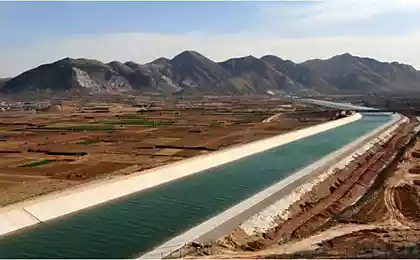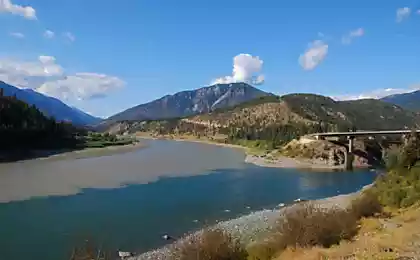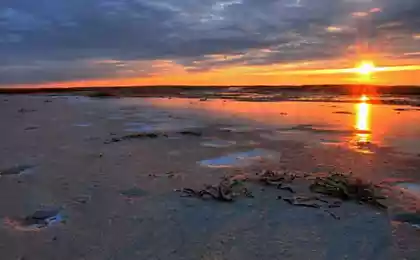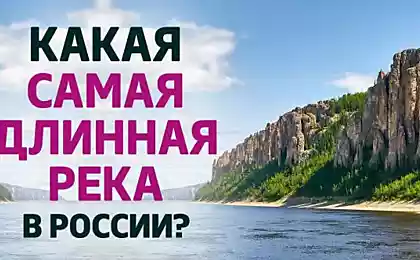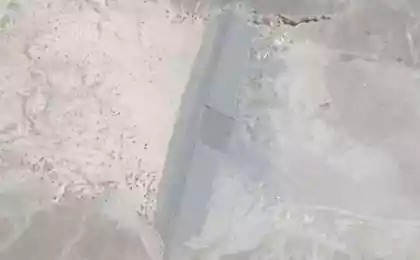951
The meeting of two rivers (11 photos)
In geography, the term "fusion" refers to the meeting place of two or more reservoirs. This can be a place of confluence of the main tributary of the river or the place where two rivers meet to form the river with a completely different name. In this post, presented a dozen confluence of the rivers and other water bodies from around the world, selected by the photos, which is best seen the contrast of the two reservoirs.
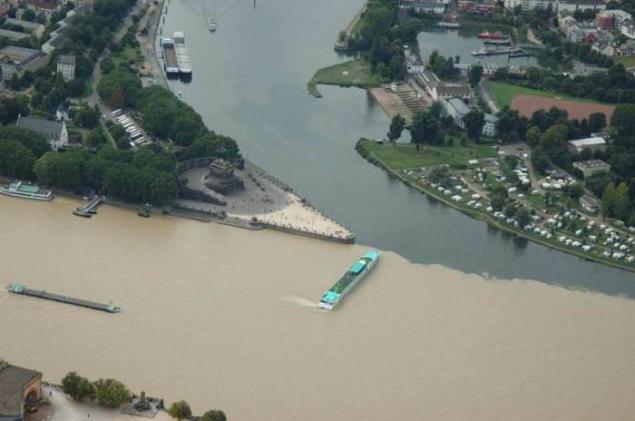
1. confluence of the rivers Rhône and Arve in Geneva, Switzerland. River left - Ron, who leaves Lake Leman. River right - Arve, which feeds many glaciers of the Chamonix valley and then flows to the northwest, falling into Ron on the west side of Geneva, where she was a high level of sludge creates such a contrast. (I_let_my_dog_lick_my on Reddit)
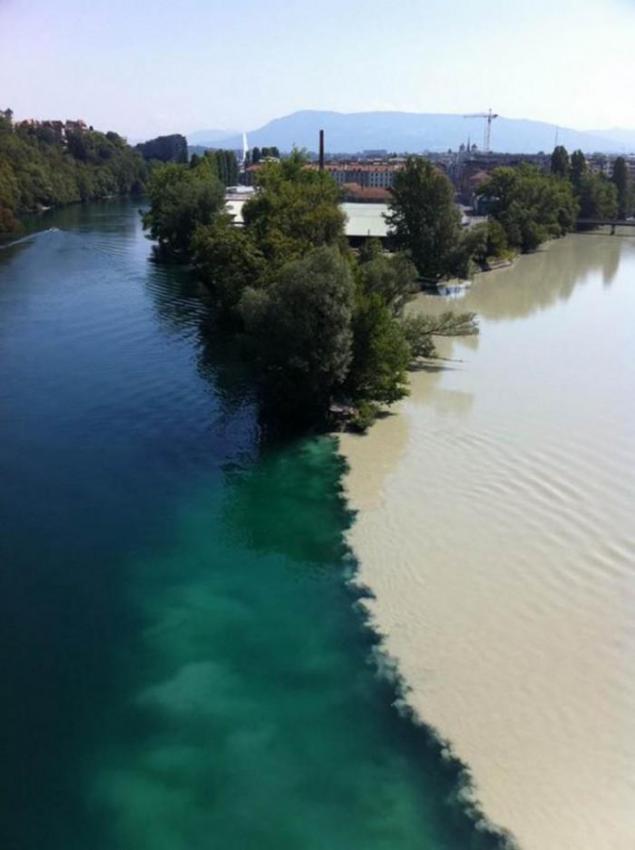
2. Place the confluence of the Inn and Ilz in Passau, Germany. Ilz - a relatively small mountain stream with blue water, and the Inn - a fairly large river flowing from Salzburg (at the top). The River Inn greater water flow than in the Danube, and yet it follows the flow of the city, which is called in one word - the Danube. This photo was taken from the fortress Oberhaus over the city of Passau in Lower Bavaria, Germany. The city is also called the "city of three rivers". (B k on Flickr)
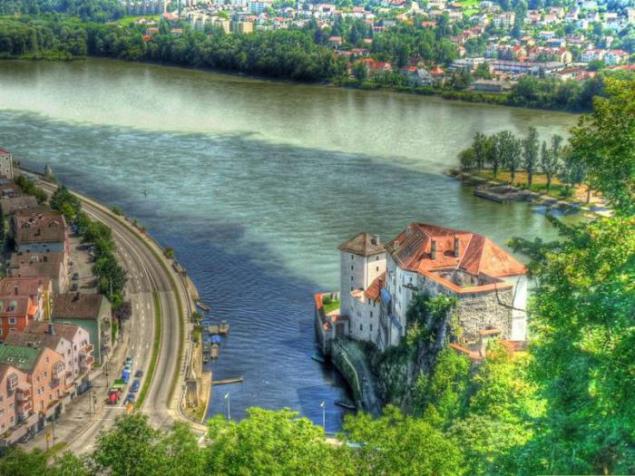
3. Place the confluence of the Ohio and Mississippi at Cairo, Illinois, USA. Ohio River became a tributary of the Mississippi River to the south of Cairo, Illinois - a small town on the strip of land at the confluence of the river (in the center). Brown full deposits of water flowing to the north-east of the Ohio River are very different from the green and the relatively clean waters of the Mississippi River (which flows from north-west to the south). The color of the rivers in this picture is different from the usual green and brown Mississippi Ohio. This suggests that the heavy rain in December 2005 in these areas has led to more than usual level of sediments in rivers. Water do not mix, even 5-6 km downstream. (NASA)
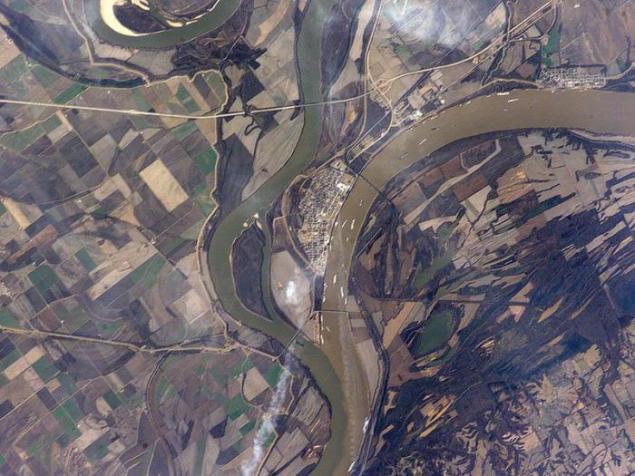
4. Place the confluence of the Jialing and Yangtze River in Chongqing, China. Jialing River on the right stretches for 119 km. In Chongqing, it empties into the Yangtze River. Clean Water Jialing meet with brown waters of the Yangtze River. By absorbing water Jialing, the Yangtze becomes even stronger, continuing its way and passing through the Three Gorges.
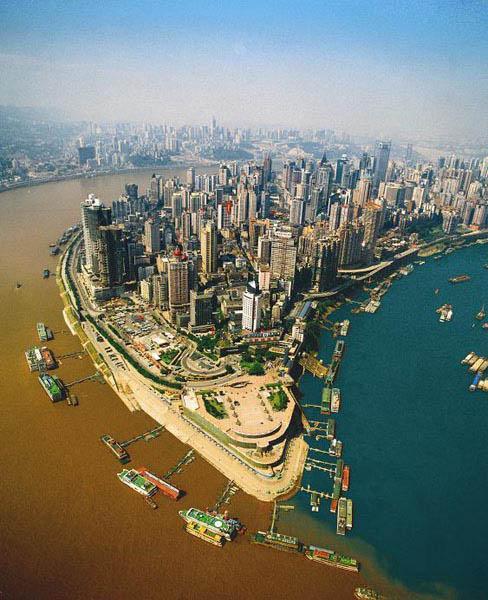
5. Place the confluence of the Rio Negro and Solimoes near Manaus, Brazil. Rio Negro - a river with dark (almost black) with water and Solimoes - a river with sand-colored waters. 6 km of water of the two rivers flow side by side. This is one of the most famous attractions of Manaus, Brazil. And all because of the difference in temperature, flow rate and density of the water in the two rivers. Rio Negro flows at a rate of about 2 kilometers per hour and at a temperature of 28 ° C, and Solimoes - 4-6 km per hour and a temperature of 22 ° C. (Immelman284)
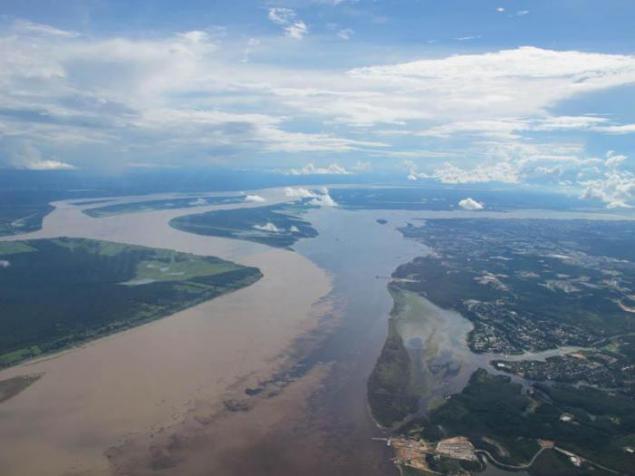
6. Place the confluence of the Green and Colorado in Canyonlands National Park, Utah, USA. Green River - a very long stream in the Rockies. It winds its way south to Utah, turning to the east, falling in Colorado, and then turning to the south.
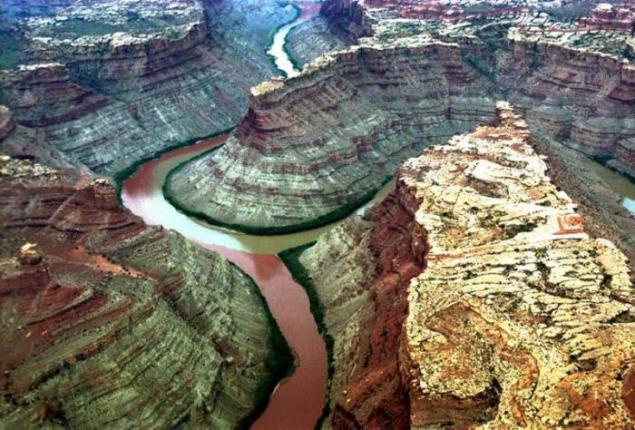
7. Place the confluence of the Thompson and Fraser to Lytton, British Columbia, Canada. Thompson River (net) ends in Lytton, Canada, where the river empties into the Fraser (muddy). (Siacob on Flickr)
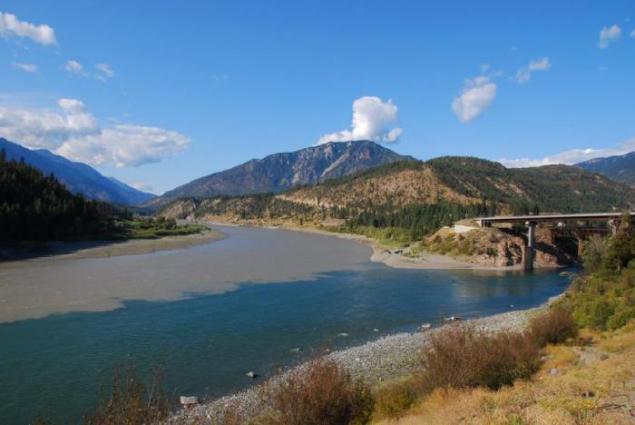
8. Place the confluence of Alaknanda and Bhagirathi in Devaprayage, India. Devaprayag - a city in the Indian state of Uttarakhand. This is one of the five confluence of the Alaknanda and the place where the Ganges River is formed. Alaknanda rises at the confluence of the glaciers and their sockets Satopanth and Bhagirath Kharak. The waters of the Bhagirathi river formed at the foot of the Gangotri Glacier.

9. Place the confluence of the Moselle and the Rhine in Koblenz, Germany. In Koblenz Moselle flows into the Rhine. The very name Koblenz means "Merge." (PETER JANSEN @ Panoramio.com)
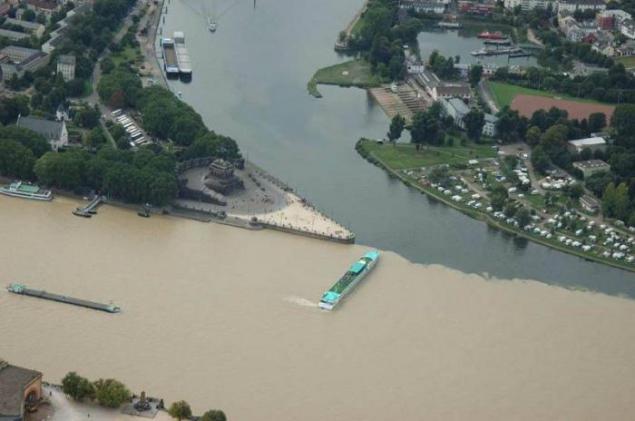
10. The confluence of the Drava and the Danube near the town of Osijek, Croatia. On the right bank of the Drava river, 25 km upstream from the confluence with the Danube lies the town of Osijek. (WWF: Amazon of Europe)
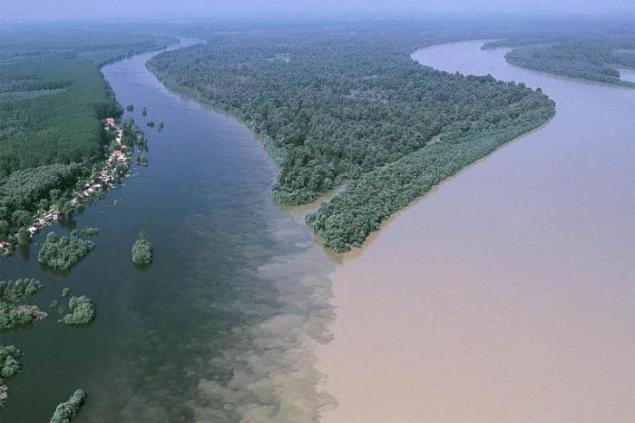

1. confluence of the rivers Rhône and Arve in Geneva, Switzerland. River left - Ron, who leaves Lake Leman. River right - Arve, which feeds many glaciers of the Chamonix valley and then flows to the northwest, falling into Ron on the west side of Geneva, where she was a high level of sludge creates such a contrast. (I_let_my_dog_lick_my on Reddit)

2. Place the confluence of the Inn and Ilz in Passau, Germany. Ilz - a relatively small mountain stream with blue water, and the Inn - a fairly large river flowing from Salzburg (at the top). The River Inn greater water flow than in the Danube, and yet it follows the flow of the city, which is called in one word - the Danube. This photo was taken from the fortress Oberhaus over the city of Passau in Lower Bavaria, Germany. The city is also called the "city of three rivers". (B k on Flickr)

3. Place the confluence of the Ohio and Mississippi at Cairo, Illinois, USA. Ohio River became a tributary of the Mississippi River to the south of Cairo, Illinois - a small town on the strip of land at the confluence of the river (in the center). Brown full deposits of water flowing to the north-east of the Ohio River are very different from the green and the relatively clean waters of the Mississippi River (which flows from north-west to the south). The color of the rivers in this picture is different from the usual green and brown Mississippi Ohio. This suggests that the heavy rain in December 2005 in these areas has led to more than usual level of sediments in rivers. Water do not mix, even 5-6 km downstream. (NASA)

4. Place the confluence of the Jialing and Yangtze River in Chongqing, China. Jialing River on the right stretches for 119 km. In Chongqing, it empties into the Yangtze River. Clean Water Jialing meet with brown waters of the Yangtze River. By absorbing water Jialing, the Yangtze becomes even stronger, continuing its way and passing through the Three Gorges.

5. Place the confluence of the Rio Negro and Solimoes near Manaus, Brazil. Rio Negro - a river with dark (almost black) with water and Solimoes - a river with sand-colored waters. 6 km of water of the two rivers flow side by side. This is one of the most famous attractions of Manaus, Brazil. And all because of the difference in temperature, flow rate and density of the water in the two rivers. Rio Negro flows at a rate of about 2 kilometers per hour and at a temperature of 28 ° C, and Solimoes - 4-6 km per hour and a temperature of 22 ° C. (Immelman284)

6. Place the confluence of the Green and Colorado in Canyonlands National Park, Utah, USA. Green River - a very long stream in the Rockies. It winds its way south to Utah, turning to the east, falling in Colorado, and then turning to the south.

7. Place the confluence of the Thompson and Fraser to Lytton, British Columbia, Canada. Thompson River (net) ends in Lytton, Canada, where the river empties into the Fraser (muddy). (Siacob on Flickr)

8. Place the confluence of Alaknanda and Bhagirathi in Devaprayage, India. Devaprayag - a city in the Indian state of Uttarakhand. This is one of the five confluence of the Alaknanda and the place where the Ganges River is formed. Alaknanda rises at the confluence of the glaciers and their sockets Satopanth and Bhagirath Kharak. The waters of the Bhagirathi river formed at the foot of the Gangotri Glacier.

9. Place the confluence of the Moselle and the Rhine in Koblenz, Germany. In Koblenz Moselle flows into the Rhine. The very name Koblenz means "Merge." (PETER JANSEN @ Panoramio.com)

10. The confluence of the Drava and the Danube near the town of Osijek, Croatia. On the right bank of the Drava river, 25 km upstream from the confluence with the Danube lies the town of Osijek. (WWF: Amazon of Europe)

